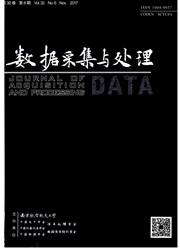

 中文摘要:
中文摘要:
首先分析了无载频脉冲式超宽带雷达检测生命信号的检测原理,论证了基于频谱搜索检测生命信号的方法;然后介绍了一款新颖的无载频脉冲式超宽带生命信号检测雷达系统。该雷达发射机结构简单,能产生Vp-p为2~10V、脉冲宽度为300~500ps、脉冲重复频率大于10MHz的超短脉冲。接收机利用PNP和NPN微波三极管的互补特性,产生一对平衡对称的超短门脉冲控制二极管桥的导通与截止,实现对天线接收到的信号进行采样,从而完成等效采样接收。依据人体呼吸信号的频谱特性,搜索包含具有最大功率谱的生命信号的快时间点、提取位于快时间点和不同慢时间点的雷达信号得到生命信号。实验证明,该雷达系统能实时实现人体生命信号非接触式检测。
 英文摘要:
英文摘要:
The principle of the detecting vital signal using the base-band pulse ultra-wideband (UWB) radar is analyzed and the detecting method is verified based on the analysis. A novel base-band pulse UWB radar system in the vital signal detecting is presented. The presented transmitter can generate base-band pulse with Vp-p=2-10 V, pulse duration= 300--500 ps, pulse repetition frequency (PRF)more than 10 MHz. Taking advantage of the complementary characteristics of PNP and NPN microwave bipolar transistor, truly balanced gating pulses are generated in the radar receiver. Switching the diode bridge by the two balanced pulses, the desired signal received by the radar antenna is acquired. By using the equivalent-time sampling scheme and the maximum power density searching algorithm based on the amplitude frequency characteristic of vital signal of human, the vital signal of human is extracted by processing the recorded radar data received at the same fast time and different slow time. Experimental results show that the radar system can detect the vital signal of human in real time.
 同期刊论文项目
同期刊论文项目
 同项目期刊论文
同项目期刊论文
 期刊信息
期刊信息
